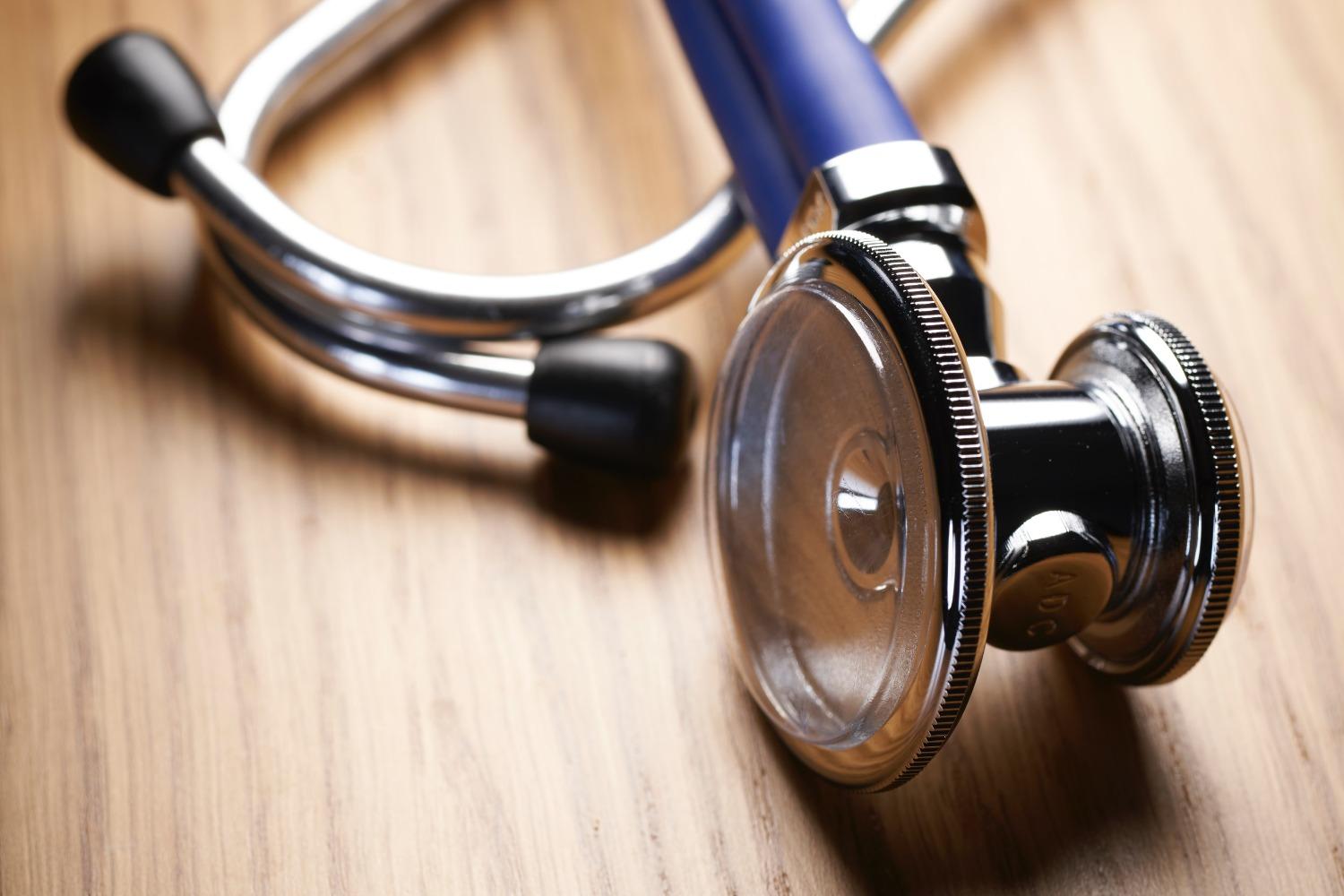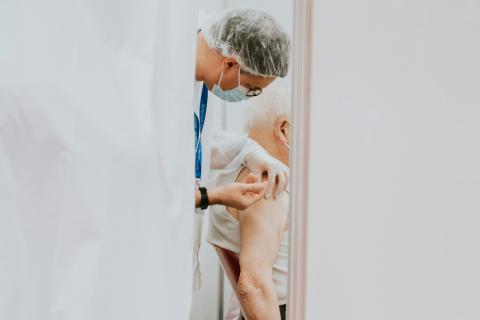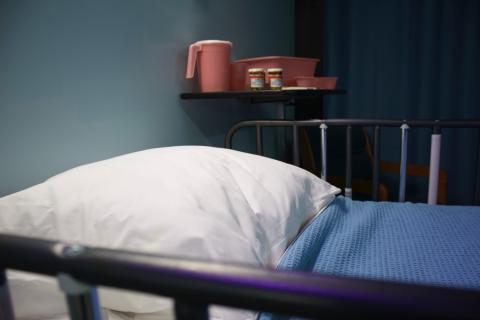
Since the Second Vatican Council, the Church has called for the renewal of Catholic education at all levels in order to foster the development of faith, wisdom, virtue, and personal and social responsibility. The mission of the Saint Gianna School of Health Sciences (SGSHS) is to “prepare health care professionals, anchored in moral courage, who respect and defend the dignity of the human person.” Inherent in this mission is a responsibility to ensure not only that our students are highly skilled in their academic and clinical skills, but also that they possess the ability to engrain Catholic social teaching into their professions. The question arises: how can we form students most effectively as healthcare providers with a solid foundation of Catholic social teaching within the limits and opportunities of a secular curricular framework and rigid accreditation requirements? A common thread for all of healthcare is clinical reasoning and the International Classification of Functioning, Disability and Health (ICF).
Clinical reasoning, defined as a process in which clinicians gather information, interpret and analyze the information in order to create hypotheses, and determine optimal diagnoses and treatment plans, is an essential component of healthcare delivery. All programs that educate students in health sciences across the United States are expected to teach, guide, and mentor future providers in this process. The ICF is a framework for describing and organizing information on functioning and disability and has been suggested as a tool that could be helpful in facilitating clinical reasoning.1 The ICF, approved by the World Health Organization in 2001, provides a universal language and a measurement of health and disability. Different from previous models that focused solely on pathology and disease, the ICF integrates the social and medical models of disability by including personal and environmental factors that impact the person’s level of function. These contextual factors, which can either serve as barriers or facilitators of wellness, provide a more comprehensive background of the patient’s situation.
Personal factors include elements such as gender, race, age, lifestyle, values, cultural beliefs, education, and profession, while environmental factors range from the physical location such as climate, terrain, and housing design to social factors such as attitudes, policies, and laws.2 The ICF, and thus the clinical reasoning process, became clear to me when I spent time as a physical therapist working with native Mayan people in the villages surrounding Lake Atitlan in Guatemala. In addition to recognizing the patient’s disease and resultant impairments, I had to consider factors such as their living conditions (often a one-room shack with an uneven dirt floor), traditional Mayan beliefs about health and healing, language barriers, and cultural beliefs on gender, marriage, and work. Interventions I would have typically used in the United States, such as the use of exercise equipment or home gyms, would have been unsuccessful in this setting. Instead, my focus had to be on creative interventions that recognized and appreciated the importance of family, work, and faith within the constraints of poverty and limited resources.
The healthcare provider’s and patient’s attitudes, values, and beliefs, all part of the contextual environment, impact health outcomes. Ethical reasoning, defined as the ability to identify, assess, and develop ethical arguments from a variety of positions, is used to determine personal or environmental factors or values that may impact the clinical reasoning process.3 In the SGSHS, our belief is that all students need to have a solid grasp of the intersection between faith and reason as a foundational component of the contextual factors that impact clinical reasoning and ethical decision making.
From a strictly pragmatic viewpoint, understanding the core component documents of the Catholic Church as they relate to healthcare, such as the Ethical and Religious Directives, is a valuable and necessary skill for future providers as there is a strong history and commitment to Catholic healthcare in the US. Between 1866-1926, Catholic sisters founded nearly 500 hospitals in the US.4 Additionally, over 600 nuns from various orders provided a majority of the only trained nursing care during the Civil War. Their work served as a foundation for the science behind nursing education including the importance of aseptic technique.5 Between 2001 and 2016, the number of Catholic-owned or affiliated hospitals grew by 22%. Due to mergers and acquisitions, over 14% of acute care hospitals across the nation are owned or affiliated with the Catholic Church and, in 10 states, that number is greater than 30%.6 Presently, one in six patients in the United States receives treatment in a Catholic hospital each year. As healthcare costs reach unsustainable levels, which in turn leads to escalating social justice issues that compromise the common good, Catholic social teaching provides us with a guidepost for decision making that, at its fundamental core, respects the dignity of the human person.
The United States Conference of Catholic Bishops (USCCB) has articulated several key themes at the heart of Catholic social tradition that combine faith, reason, tradition, and experience to respond to social justice issues in modern society. These include: (1) Life and Dignity of the Human Person (2) Call to Family, Community, and Participation, (3) Rights and Responsibility, (4) Option for the Poor and Vulnerable, (5) The Dignity of Work and the Rights of Workers, (6) Solidarity, and (7) Care for God’s Creation.7 I will highlight a few that are currently strong focuses within SGSHS programs.
The first, and inviolable, principle of Catholic social teaching is the dignity of the human person. This serves as the foundation for the SGSHS mission. The dignity of the human person “anchors the Catholic commitment to defend human life, from conception until natural death, in the fundamental moral obligation to respect the dignity of every person as a child of God.”8 While faculty tackle the profound issues related to beginning and end of life, they also guide students to consider how dignity and respect are ensured for all people whether or not the patient’s life choices align with their own.
In order for human dignity to be protected, the Catholic church also teaches that all persons have rights and responsibilities. This is threaded throughout curricula in many ways including the necessity of informed consent in research and treatment, autonomy in decision making, and our role as advocates for policies and laws that have elements of both personal and social responsibility to protect the most vulnerable.
Christ gives each of us a clear command: “love your neighbor as yourself.” As our society struggles with complicated issues such as the distribution of services and goods, the principle of solidarity and the option for the poor and vulnerable ask Christians to ensure we are promoting policies that go beyond our own interests and meet the needs of the most vulnerable. As the USCCB extorts us, “A basic moral test for any society is how it treats those who are most vulnerable.”9 Additionally, loving our neighbors requires us to reach out beyond our personal geographic boundaries. Academic programs within the SGSHS have a long history of serving the poor and vulnerable both internationally, such as our service-learning experiences in Guatemala and Peru, as well as in our local community with our pro bono clinics for under-insured or uninsured citizens. Students begin to understand and practice screening for social determinants of health, such as poverty and mental illness, to care for our patients in a holistic manner.
Faculty teaching in health professions have an arduous transition from clinical practice to teaching the next generation of health providers. In addition to advanced proficiency within their area of clinical practice, faculty also require additional education and preparation in elements such as learning theories, diverse pedagogical strategies, and curricular development and assessment. Under the umbrella of the SGSHS, additional responsibilities include understanding and internalizing the principles of Catholic social teaching and how to effectively integrate them within the professional curricula. The University of Mary has taken a comprehensive approach that begins at the hiring stage. Faculty are asked to consider thoughtfully how they might support and uphold the university's Christian, Catholic, and Benedictine mission. Furthermore, after reviewing Education within the Benedictine Tradition and Ex Corde Ecclesiae,10 applicants are asked if they have any reservations about serving at a Catholic institution and which of the six Benedictine values resonates most deeply within them. This thought-provoking process provides a foundation for further discussion with the interview team, academic administrators, and the university President.
Development is an ongoing process. The University has created a mission integration committee tasked with ensuring various opportunities for personal and professional growth. Within the SGSHS, a more focused approach includes discussions on topics such as biomedical ethics and ethical and religious directives. One of the most profound opportunities occurred in August 2017 when all SGSHS faculty were invited on a pilgrimage to Europe focused on “The Dignity of the Human Person.” Intense preparation included readings and discussions on the history of medicine, reflections and history of medical experimentation during World War II, and the intersection of faith and reason. This allowed for a deep and meaningful experience during travels through Paris, France; Nuremburg, Dachau, and Eichstatt, Germany; and Lourdes, France. Faculty continue to engage in active learning and reflection in various settings including formal speakers, small group discussions, readings, and case studies.
Learning is a life-long process, especially in a rapidly changing healthcare environment which necessitates the ongoing study of medical advances. Faculty in the SGSHS have an additional responsibility to serve as role models while also guiding and forming students in the principles of Catholic social teaching.
1 Atkinson H.L., Nixon-Cave K. (2011). A tool for clinical reasoning and reflection using the international classification of functioning, disability and health (ICF) framework and patient management model. Physical Therapy, 91, 416-430. PMID: 21273627.
2 World Health Organization, 2011.
3 Schell, B. A. B. (2003). Clinical reasoning: The basis of practice. In E. B. Crepeau, E. S. Cohn, & B. A. B. Schell (Eds.), Willard and Spackman’s occupational therapy (10th ed.; pp. 131–139). Sydney: Lippincott Williams & Wilkins.
4 Wall, B. (2005). Hospitals and habits: Catholic sisters and the medical marketplace, 1860-1930. American Catholic Studies, 116(1), 91-94. Retrieved April 12, 2021, from http://www.jstor.org/stable/44194869
5 Capparelli, J. L. (2005). Nursing nuns: A history of caring—and changing the course of health care. American Journal of Nursing, 105(8), 72H.
6 Condit, D. P. (2018, November 18). Catholic Social Teaching and health care. Democracia Participativa. https://democraciaparticipativa.net/documentos-data-a-referenda/documents-in-english/christian-social-thoght/14848-catholic-social-teaching-and-health-care.html
7 United States Conference of Catholic Bishops. (2021). Seven themes of Catholic Social Teaching. https://www.usccb.org/beliefs-and-teachings/what-we-believe/catholic-social-teaching/seven-themes-of-catholic-social-teaching
8 United States Conference of Catholic Bishops. (2015). Forming consciences for faithful citizenship - Part I - The U.S. bishops' reflection on Catholic teaching and political life. https://www.usccb.org/issues-and-action/faithful-citizenship/forming-consciences-for-faithful-citizenship-part-one
9 Ibid.
10 John Paul II. (1990, August 15). Ex corde ecclesial. http://www.vatican.va/content/john-paul-ii/en/apost_constitutions/documents/hf_jp-ii_apc_15081990_ex-corde-ecclesiae.pdf


